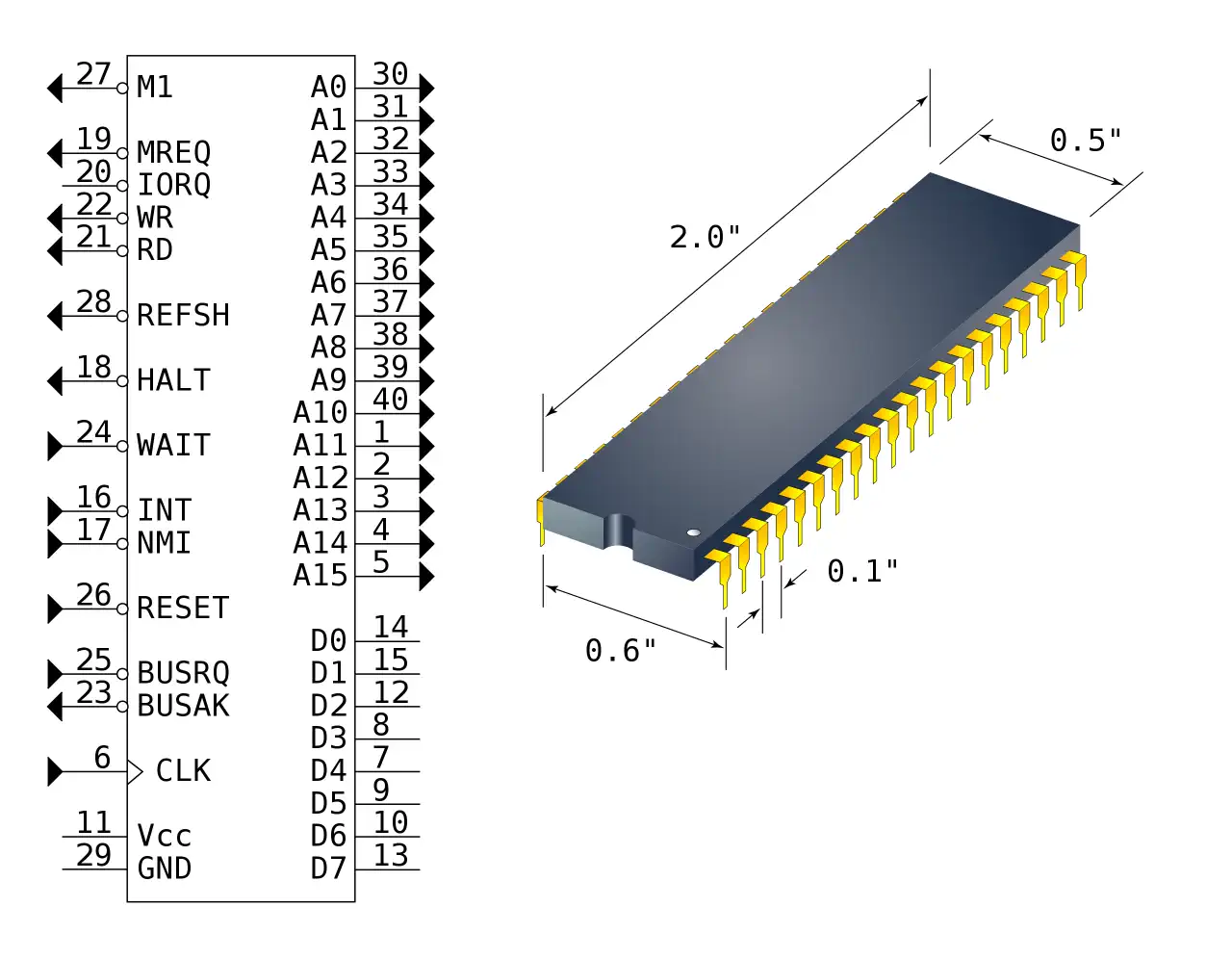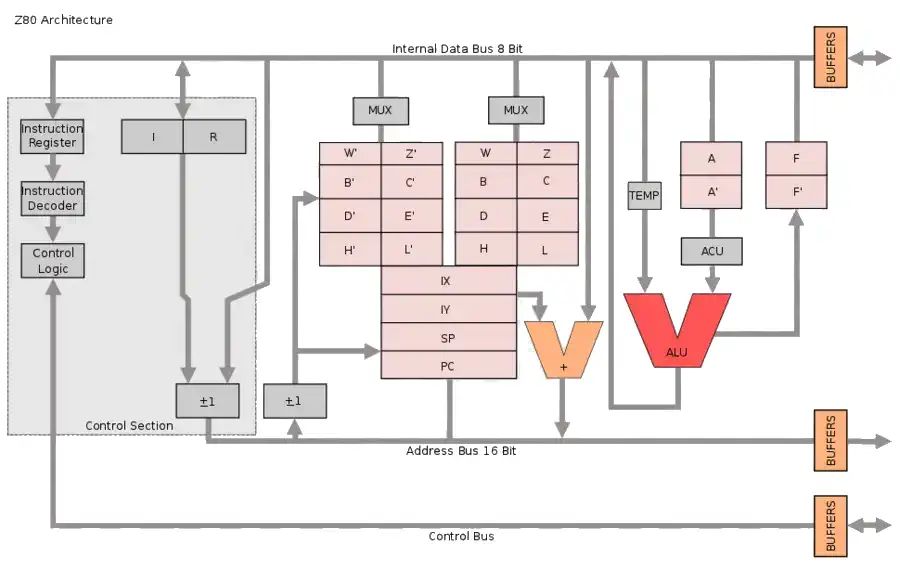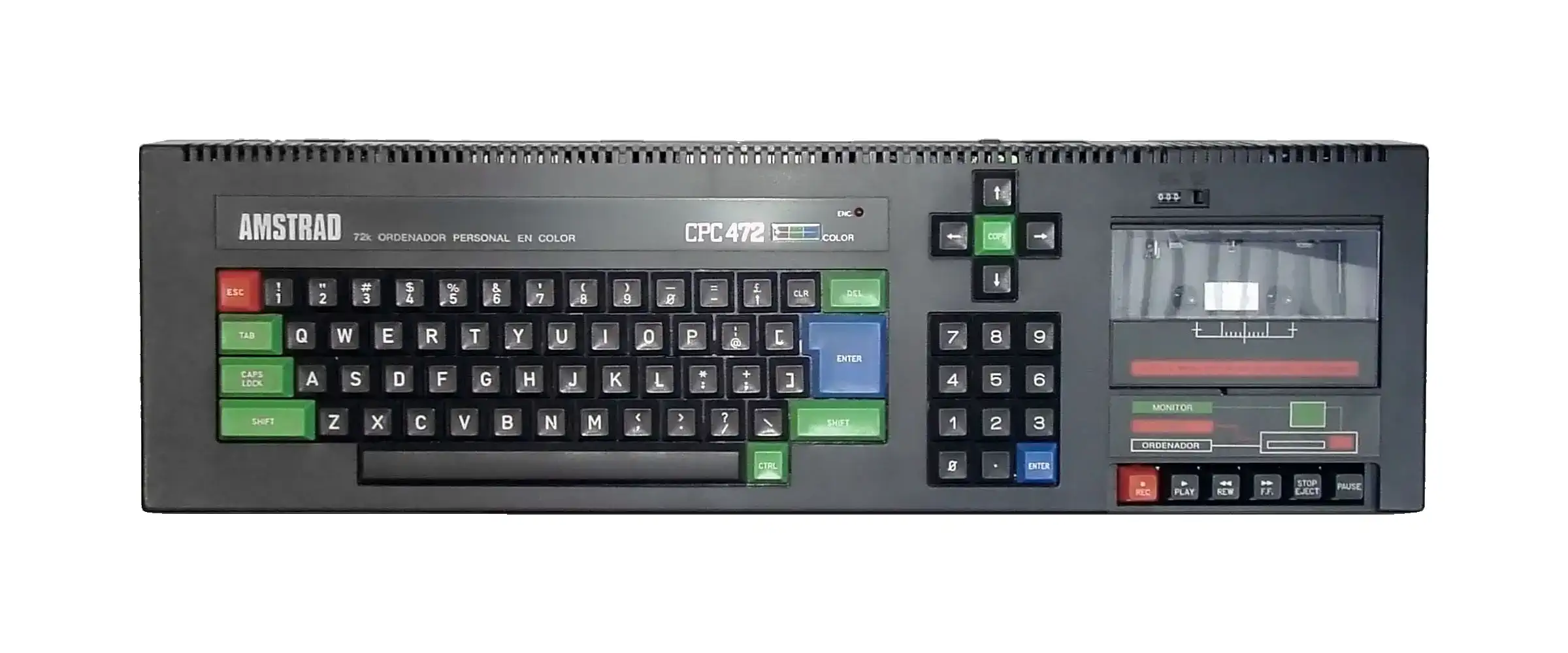The Amstrad CPC 472 - A spanish computer
The Amstrad CPC 472 is belongs to the CPC range, Color Personal Computer. The CPC 472 was sold exclusively in Spain between 1985 and 1986. It is functionally identical to the Amstrad CPC 464.
The Spanish government at the time was trying to curb the import of foreign products, and one of the articles of the customs tariff, explicitly taxed computers that had 64KByte or less of memory. This law was, by Royal decree, lobied by the Dragon Computer company. Dragon was a subsidiary of a Brittish toy company, but was bought by the Spanish Eurohard. In order to make the Dragon computer successful, the company agressively sought protection from foreign imports. The import tariff on computers with 64KByte of RAM or less was the result.
Amstrad took issue with this and specifically designed the CPC472. The engineers had put an extra 8Kbyte RAM chip in the original CPC464 to create a total of 72KByte of memory, and as such, it was not subject to Spain's import tariff.
Amstrad CPC Computers
Amstrad was known for cheap hi-fi products but had not broken into the home computer market until the CPC 464. Their consumer electronic sales were starting to plateau and owner and founder Alan Sugar stated "We needed to move on and find another sector or product to bring us back to profit growth". Work started on the Amstrad home computer in 1983 with engineer Ivor Spital who concluded that Amstrad should enter the home computer market, offering a product that integrated low-cost hardware to be sold at an affordable "impulse-purchase price". Spital wanted to offer a device that would not commandeer the family TV but instead be an all-in-one computer with its own monitor, thus freeing up the TV and allowing others to play video games at the same time. Bill Poel, General Manager of Amsoft (Amstrad's software division), said during the launch press release that if the computers were not on the shelves by the end of June "I will be prepared to sit down and eat one in Trafalgar Square".
Many programs and peripherals were developed for the CPC computers. Amstrad's Operating System was AMSDOS. This OS is embedded in Basic using so-called RSX commands starting with |, but it could not format disks, for that you needed a special application. The 464 also could use CP/M 2.2 or 3.0 when used with an external Floppy disk unit (3" Hitachi, 180 KB / face). A lot of great CP/M software was adapted for the Amstrad CPC.
About 42 KB RAM was available for the user, the video memory and the ROM were mapped on the same addresses with a dedicated chip to switch the memory banks automatically.
The first Amstrad CPC prototype (called "Arnold", which gave the name ROLAND (Arnold acronym) to several CPC games) was built around a 6502 processor and then changed to a Z80 late in the computer’s development. A few months later, the CPC series would be completed with a computer which offered a built-in floppy disk unit: the CPC 664.
The CPC series are powered by the Zilog Z80 processor after the original attempts to use the 6502 processor, being used in the Apple II amongst many other 8-bit computer families, failed. The Z80 runs at 4 MHz, has 64K of memory and runs AMSDOS, Amstrad's own OS. The unit includes a built in tape drive and the choice of a colour or green monochrome monitor.
Video Modes
Normal Video Modes
- Mode 0 - 160x200 in 16 colors
- Mode 1 - 320x200 in 4 colors
- Mode 2 - 640x200 in 2 colors
- Mode 3 - 160×200 in 4 colors*
Each color can be chosen from a palette of 27 colors total. The dimensions in pixels given could be raised with clever use of FullScreen Trick (often dubbed erronuously as overscan mode). This then allows with a video memory of 24 KB (approximately) to have alternate video modes.
Alternate Video Modes
- Alt Mode 0 - 192x272 in 16 colors
- Alt Mode 1 - 384x272 in 4 colors
- Alt Mode 2 - 768x272 in 2 colors
Zilog Z80 CPU Family
The Z80 quickly became popular in the personal computer market, with many early personal computers, such as the TRS-80 and Sinclair ZX80, using the Z80 as their central processing unit (CPU). It was also widely used in home computers, such as the MSX range, SORD, and the Amstrad CPC, as well as in many arcade games. Additionally, it was also used in other applications such as industrial control systems, and embedded systems. The Z80 was widely used until the mid-1980s, when it was gradually replaced by newer microprocessors such as the Intel 80286 and the Motorola 68000.
The Z80 microprocessor was developed by Zilog, a company founded by Federico Faggin in 1974. The Z80 was released in July 1976, as a successor to the Intel 8080. It was designed to be fully compatible with the 8080, but also included new features such as an improved instruction set, more powerful interrupts, and a more sophisticated memory management system.
The Z80 quickly became popular in the personal computer market, with many early personal computers, such as the TRS-80 and Sinclair ZX80, using the Z80 as their central processing unit (CPU). It was also widely used in home computers, such as the MSX range, SORD, and the Amstrad CPC, as well as in many arcade games. Additionally, it was also used in other applications such as industrial control systems, and embedded systems. The Z80 was widely used until the mid-1980s, when it was gradually replaced by newer microprocessors such as the Intel 80286 and the Motorola 68000. The design was licensed to Synertek and Mostek as well as the European SGS.
The Z80s instruction set is binary compatible with the Intel 8080, so that 8080 code such as the CP/M Operating System and Intel's PL/M compiler for the 8080 can run unmodified on the Z80. The Z80 had many enhancements over the 8080 such as 16-bit data movement instructions, block copy and block I/O instructions, single bit addressing of all registers, IX/IY offset registers, better interrupt system and a complete duplicate register file for context switching during an interrupt.
Source: WikiPedia

320x200, 4 colors
640x200, 2 colors
27 color palette Best Color 16 out of 27 colors Best Graphics 160x200 in 16 out of 27 colors Sprites none System OS Amstrad BASIC Storage Internal Tape Drive


